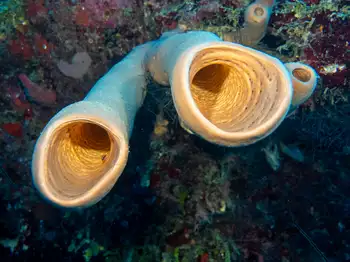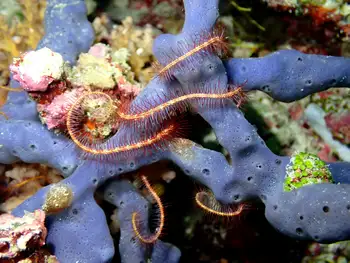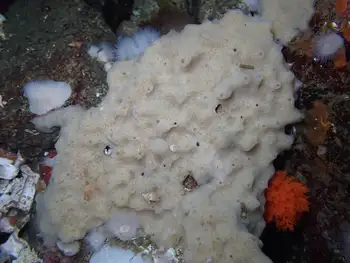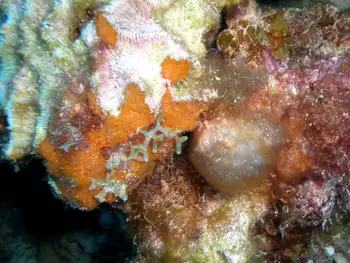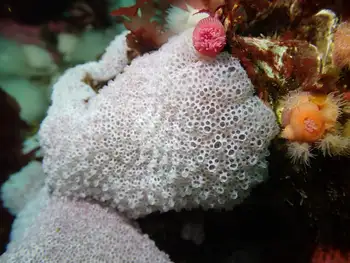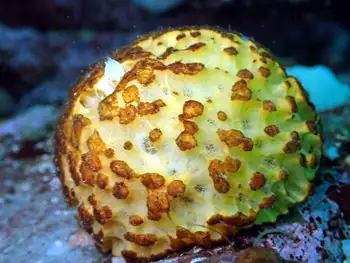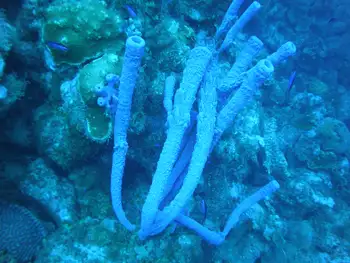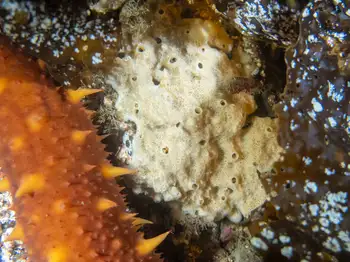Demosponges (Demospongiae) are the most diverse class in the phylum Porifera. They include 76. 2% of all species of sponges with nearly 8,800 species worldwide (World Porifera Database). They are sponges with a soft body that covers a hard, often massive skeleton made of calcium carbonate, either aragonite or calcite. They are predominantly leuconoid in structure. Their "skeletons" are made of spicules consisting of fibers of the protein spongin, the mineral silica, or both. Where spicules of silica are present, they have a different shape from those in the otherwise similar glass sponges. Some species, in particular from the Antarctic, obtain the silica for spicule building from the ingestion of siliceous diatoms. The many diverse orders in this class include all of the large sponges. Most are marine dwellers, but one order (Spongillida) live in freshwater environments. Some species are brightly colored, with great variety in body shape; the largest species are over 1 m (3. 3 ft) across. They reproduce both sexually and asexually. They are the only extant organisms that methylate sterols at the 26-position, a fact used to identify the presence of demosponges before their first known unambiguous fossils. Because of many species' long life span (500–1,000 years) it is thought that analysis of the aragonite skeletons of these sponges could extend data regarding ocean temperature, salinity, and other variables farther into the past than has been previously possible. Their dense skeletons are deposited in an organized chronological manner, in concentric layers or bands. The layered skeletons look similar to reef corals. Therefore, demosponges are also called coralline sponges.
Demospongiae. Retrieved May, 22 2023, from en.wikipedia.org/wiki/Demosponge.
